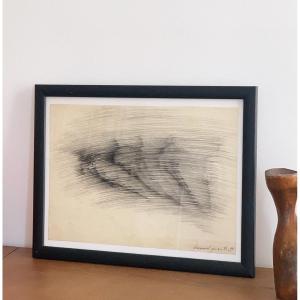Electronic vibrations, 1962
Signed and dated “62” lower right
Dimensions of the work: 36.5 x 26 cm
Provenance: Paris, Galerie Mony Calatchi
Born in the Somme in 1923, Bernard Quentin s moved to Paris at the age of seventeen where he received his first training at the École des Arts Décoratifs before entering the École des Beaux-Arts. Active in the resistance between 1942 and 1944, he resumed plastic arts classes after the war and settled in the district of Saint-Germain-des-Prés where he shared a maid's room with the actress Juliette Greco. Both were part of Boris Vian's gang and frequented post-war existentialist and surrealist circles. Bernard Quentin exhibited for the first time in 1945 at the Maison de l'Université in Paris and then several times at the Galerie Aimé Maeght with the group “Les Mains Éblouies” bringing together, among others, Joan Miro and Alberto Giacometti.
Bernard Quentin is part of the Lettrist movement, an avant-garde movement initiated in 1945 by Isidore Isou, poet and painter close to André Breton and Tristan Tzara. First fascinated by the way in which Paul Klee reworks graphic characters from ancient writing in a stylistic medium, Bernard Quentin is also interested in the letter and the sign. Very early on, the artist questioned the plastic specificities of writing by drawing on primitive calligraphy such as Egyptian hieroglyphs and the rock inscriptions of the Alps. He develops a so-called scriptural art where the words prove to be the very subject of the painting. The pencil drawing that we propose dates from this period, between 1961 and 1963, during which Bernard Quentin made his writings, signs and graffiti. At the same time, the artist, present at the Olivetti Research Center in Milan where he found Yves Klein and Arman, moved his field of work from painting to computer science by carrying out his first research on the computer. Salvador Dali describes him as a “pioneer of cybernetic art and electronic writing”.
Bernard Quentin is also known for his work as a designer since he presented the first inflatable seats in 1963, which were then mass-produced by the Milanese group Adamoli from 1966.




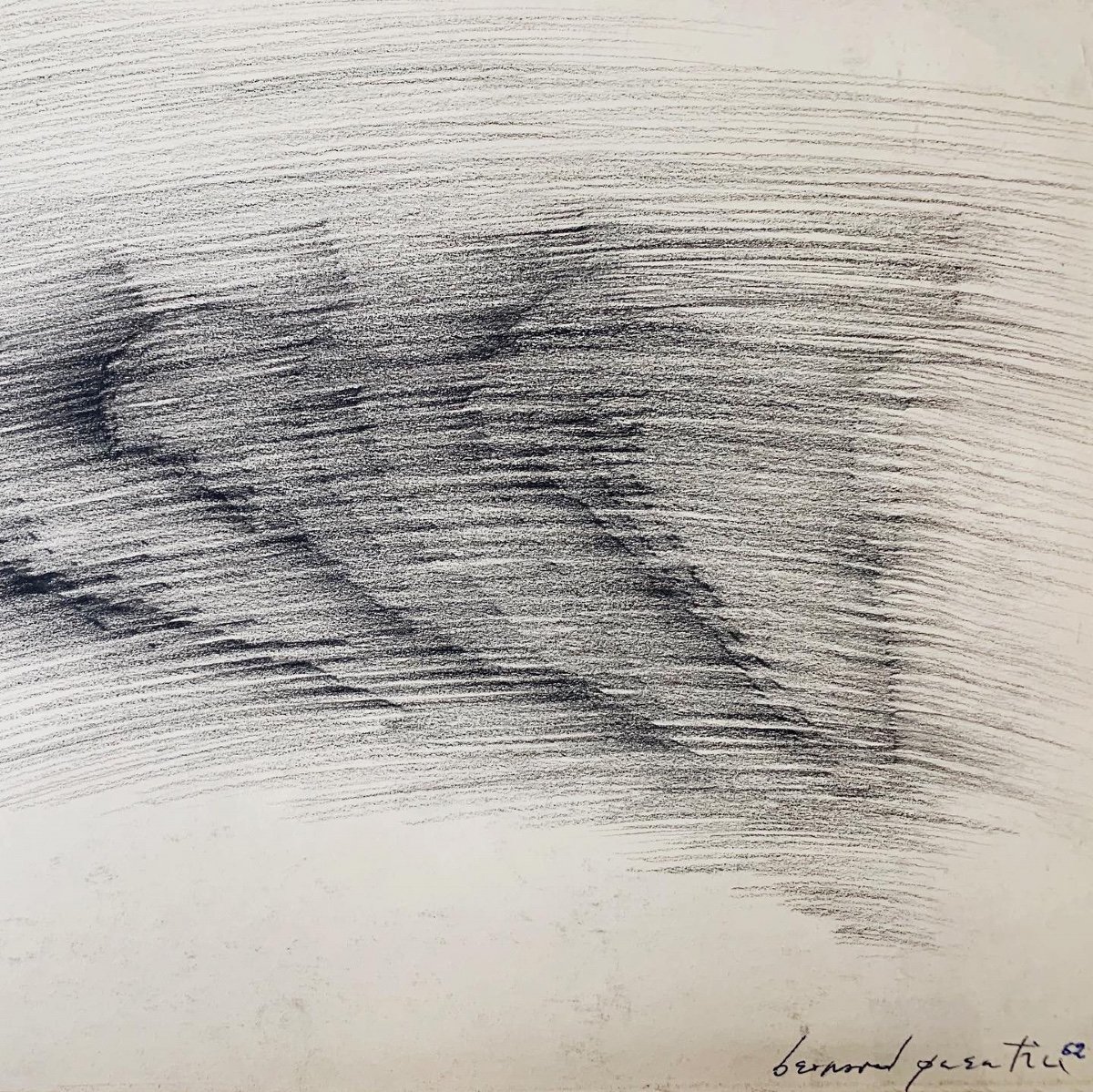
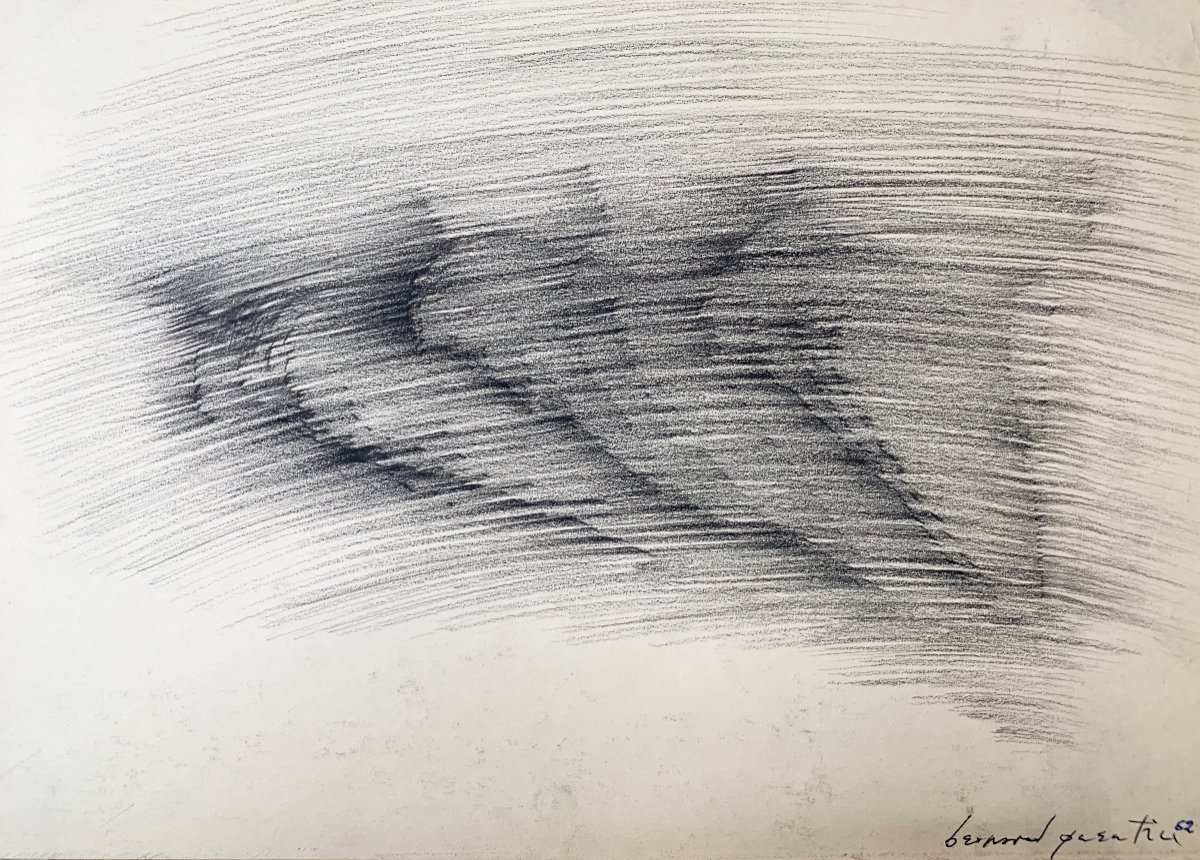

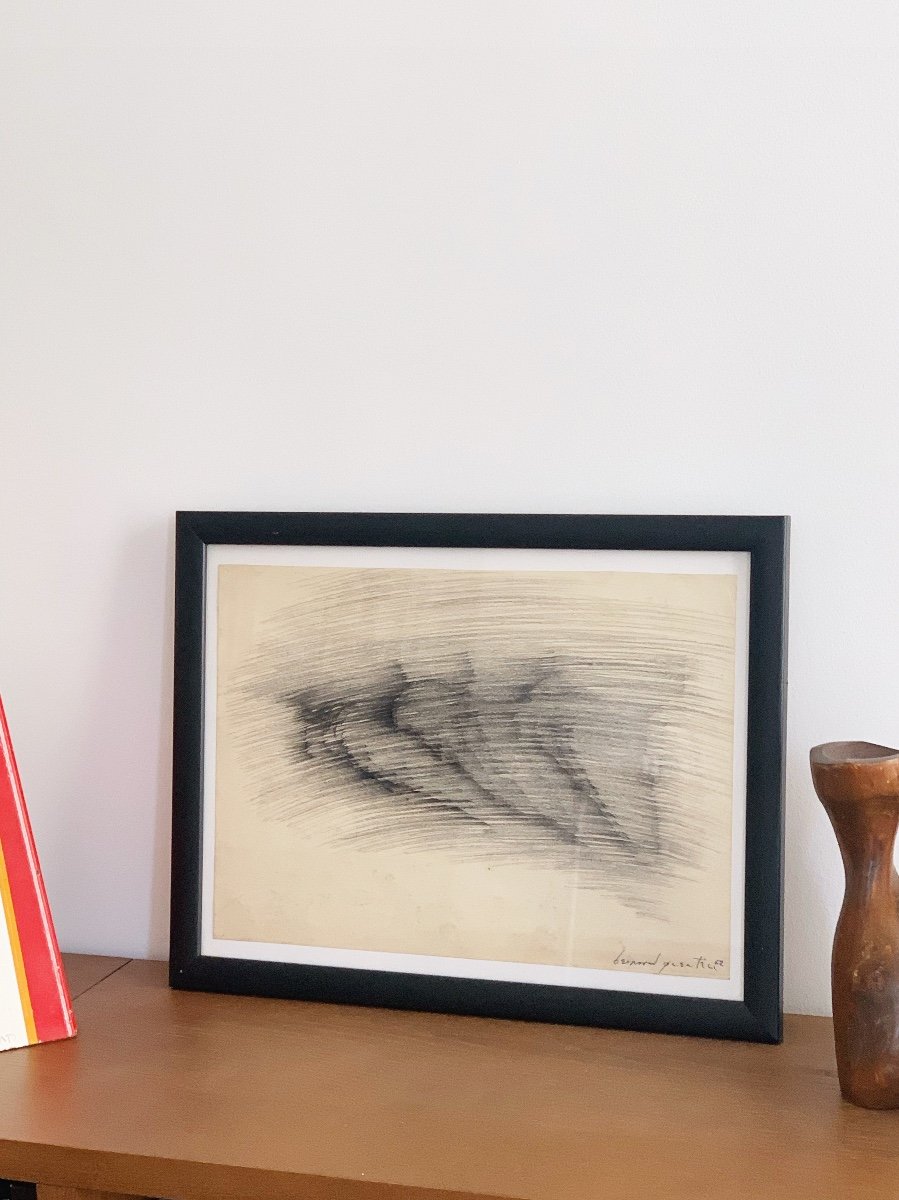
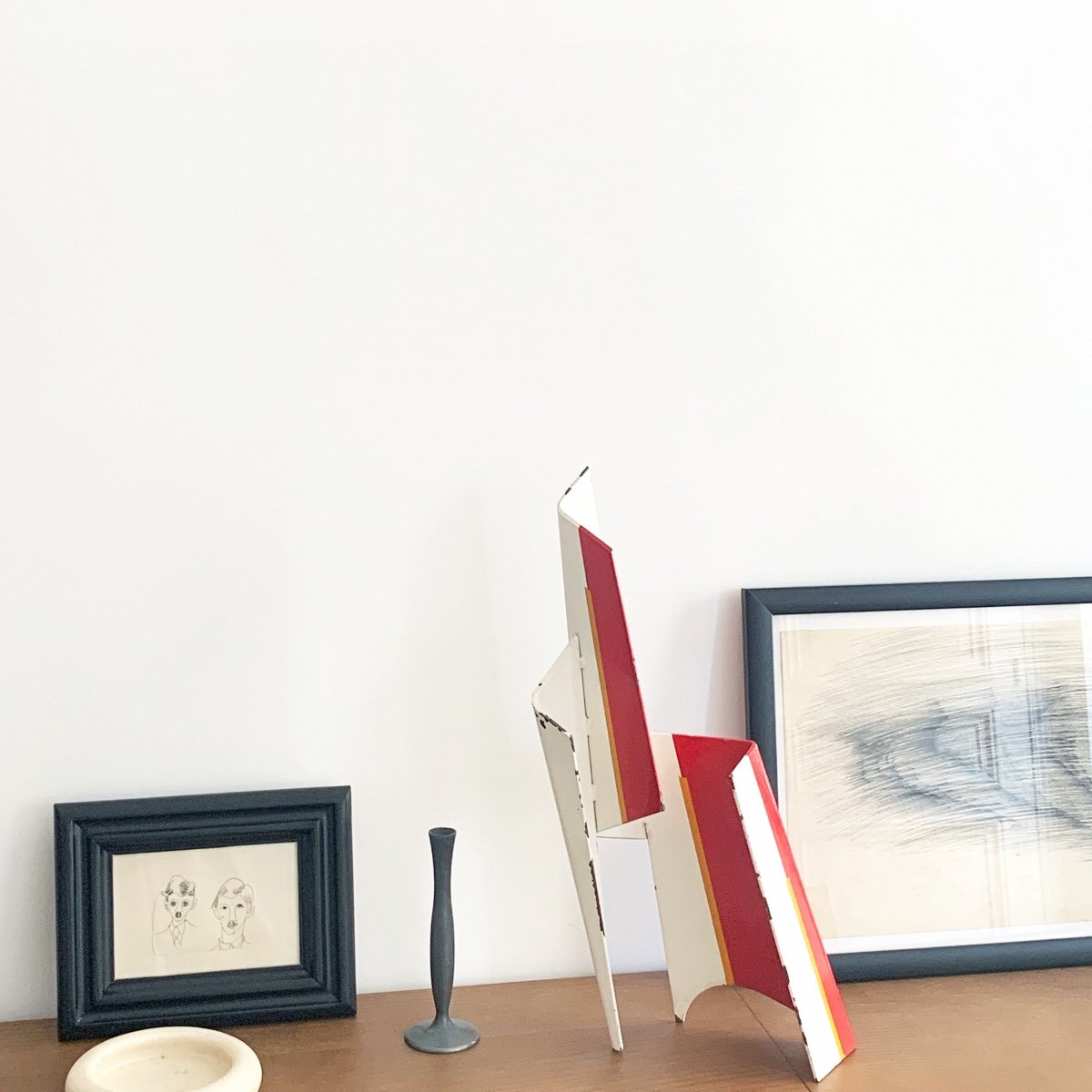
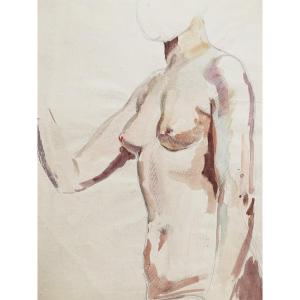
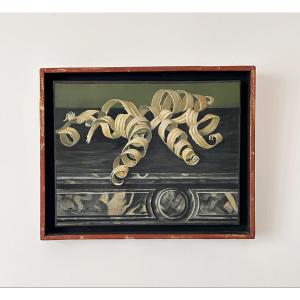

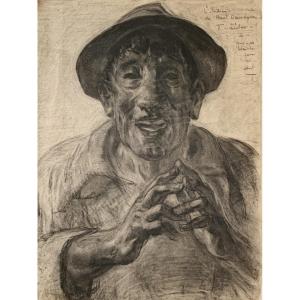

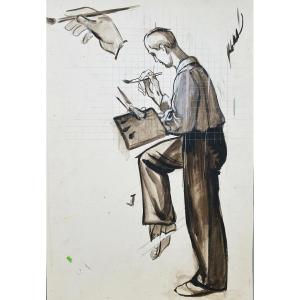

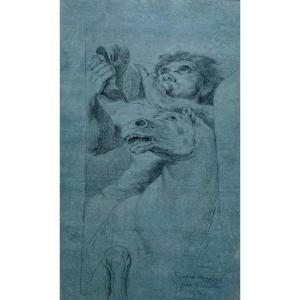


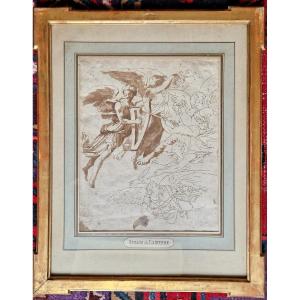




 Le Magazine de PROANTIC
Le Magazine de PROANTIC TRÉSORS Magazine
TRÉSORS Magazine Rivista Artiquariato
Rivista Artiquariato
